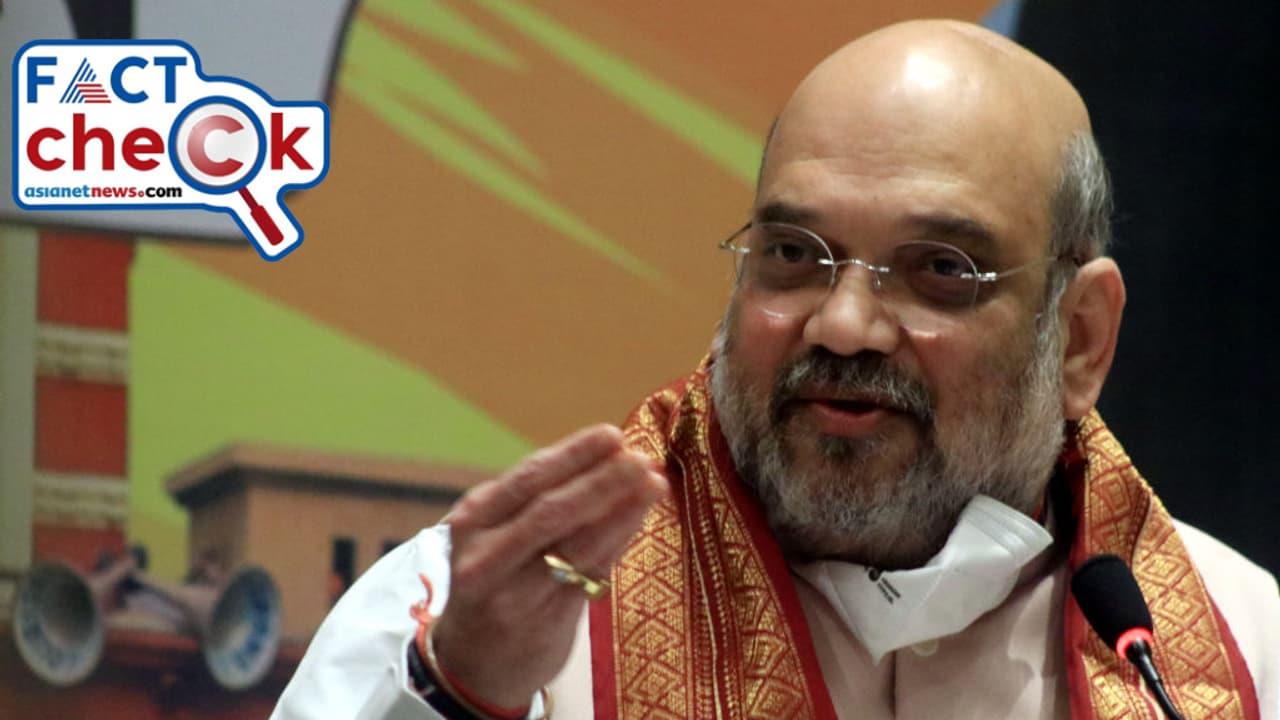Fact Check: Amit Shah Video On Operation Sindoor, Pakistan Missiles And PM Modi Is Fake
Bengaluru: A manipulated video is being circulated on social media falsely claiming that Union Home Minister Amit Shah spoke about Pakistani missiles striking multiple locations. The video also falsely shows Amit Shah criticising NSA Chief Ajit Doval and Prime Minister Narendra Modi over Operation Sindoor. The Press Information Bureau's (PIB) Fact Check unit has clarified that the video is AI-generated propaganda and completely fake. The Union Home Minister has not made any such statement, and citizens are advised not to fall for misinformation or share unverified content online.
What Does The Video Show?
In the manipulated video, Amit Shah can purportedly be heard saying that India underestimated Pakistan, and alleges that missiles were dropped in more than 26 locations. He even calls for PM Modi's resignation. The video further portrays him as questioning the government's development agenda and referencing his interactions with youth leaders of the Sangh. However the original video does not contain any such statements.
Don't fall for AI-generated propaganda!A manipulated video is circulating online, showing the Union Home Minister @AmitShah making certain claims regarding Pakistani missiles striking multiple locations and criticizing NSA Ajit Doval & Prime Minister Narendra Modi for... twitter/FKQPpGZUkA
- PIB Fact Check (@PIBFactCheck) September 23, 2025
How to Combat Fake News?
Combating Deepfakes starts with verifying the source. Only trust videos from official channels, verified social media accounts, or reputable news organizations. Content from unknown or unreliable platforms should be treated with suspicion. Next, look for inconsistencies in the video. Deepfakes often have unnatural facial movements, mismatched lip-syncing, robotic voices, or irregular blinking. Check for odd lighting, shadows, or reflections that don't align with the scene. Reverse image or video searches can help confirm authenticity. Extract key frames and run them through tools like Google Images or TinEye to trace the original source. Similarly, contextual clues-like dates, locations, or event details-should be cross-checked with credible reports.
Fact-checking platforms such as Alt News, Boom, AFP Fact Check, or PIB Fact Check are valuable for verifying viral content. Using these sources can prevent the spread of misinformation. Awareness and education are essential. Understanding common signs of AI manipulation and sharing this knowledge strengthens vigilance. Detection tools like Deepware Scanner, Sensity, or Microsoft Video Authenticator can provide additional verification. Finally, think before sharing. Ask whether the content is credible, consistent with verified news, and free from obvious errors. Pausing to verify prevents the circulation of deepfakes and misinformation online.
Legal Disclaimer:
MENAFN provides the
information “as is” without warranty of any kind. We do not accept
any responsibility or liability for the accuracy, content, images,
videos, licenses, completeness, legality, or reliability of the information
contained in this article. If you have any complaints or copyright
issues related to this article, kindly contact the provider above.
Most popular stories
Market Research

- Motif AI Enters Phase Two Of Its Growth Cycle
- Chaingpt Pad Unveils Buzz System: Turning Social Hype Into Token Allocation
- NOVA Collective Invest Showcases Intelligent Trading System7.0 Iterations Led By Brady Rodriguez
- With Seal, Walrus Becomes The First Decentralized Data Platform With Access Controls
- B2PRIME Secures DFSA Licence To Operate From The DIFC, Setting A New Institutional Benchmark For MENA & Gulf Region
- Bitmex Launches Alpha Showdown Trading Competition Featuring 3 BTC Prize Pool And Additional Rewards






















Comments
No comment